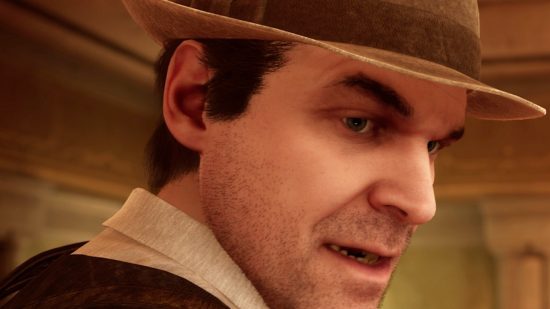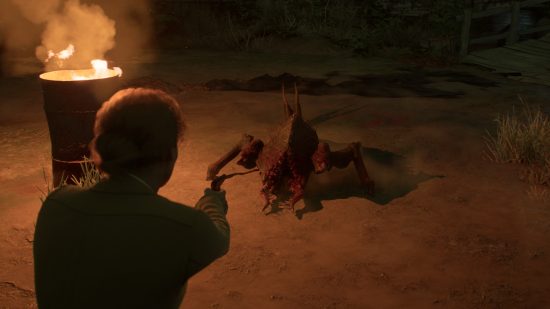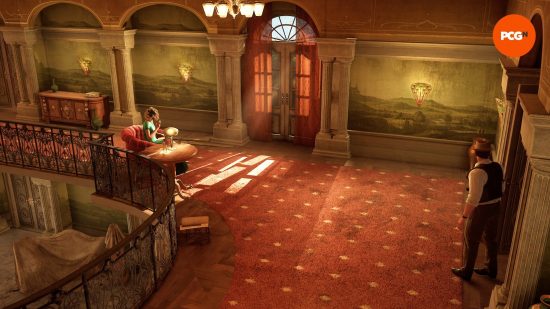Our Verdict
Alone in the Dark is a weak survival horror pastiche largely devoid of original moments. The occasional dash of character in its 1920s Deep South setting can't make up for repetitive puzzles and the feeling we've seen all of this before.
Popular gaming history will record 1992’s Alone in the Dark as the first, formalized survival horror. Earlier experiments like Sweet Home, Project Firestart, or even 3D Monster Maze or James Andreasen’s Haunted House established the spiritually assonant union of videogames and fear – when you’re the one in control, and it’s happening to you, it can be scarier than a movie or a book. But it was Frédérick Raynal and Infogrames who pushed the survival horror genre over the edge. Alone in the Dark ratified, or began to ratify, the mechanics. Combat is unintuitive by design and best avoided; progression depends on the discovery and decipherment of esoterica while simultaneously managing your constrictive inventory system.
But Alone in the Dark also invoked, for the first time, the spirit of modern survival horror, with an aesthetic and sensibility that is most perceptible in stylish (and technologically impelled) effectuations like the fixed camera, and also in variously reframed homages to both HP Lovecraft and the detective novel. Such has become the genre’s narrative framework – via deduction and guile, you will demystify, confront, and exorcise some establishment evil, be it old gods, ancient occultists, or the Umbrella Pharmaceutical Company.
In 1992, Alone in the Dark delivers survival horror into its most coherent and enduring form, a compelling vision for a new or at least heretofore never-so-clearly-expounded game type. 32 years later, Pieces Interactive’s remake performs the opposite function, clarifying the genre’s weakest and most often repeated components. If Alone in the Dark originated an entirely new style of game, the remake is a sad derivation of what followed. One version of this game may have made survival horror, but the other makes it feel as if the genre is finished.
There are sporadic moments where Alone in the Dark begins to feel like it may have an identity. The 1920s Deep South Americana inherited from the original is occasionally allowed to come forth in cutscenes punctuated by pleasing Louisiana accents and vernacular, and the accompaniment of period jazz. Likewise, the central location, Derceto Manor, becomes a gigantic puzzle box or escape room, whispering secrets and the possibility of terror each time you solve one of its tactile riddles. Those pleasing little moments in Resident Evil 2 Remake, when you correctly use an item and are treated to a swift, pseudo cutscene – a pair of bolt cutters removing a padlock, a USB sliding into a desktop – are borrowed here wholesale. The majority of the game, in fact, feels downstream of Capcom’s various Resident Evil revivals. Derceto Manor, for all its Dave Robicheaux or Philip Marlowe pretensions, is essentially a lesser version of the Raccoon City Police Department.
Narratively, we’re on familiar ground to The Evil Within, as the game periodically shifts to abstract, non-Euclidean combat stages set inside the mindscape of one of the two central characters. Shooting and fighting in general provide a less technically clean variation on Dead Space, Alan Wake 2, or – again – Resident Evil 2 Remake. It’s no small thing that Alone in the Dark’s weapons sound so powerful and punchy. Gun audio of that type can make the difference between drab, emotionless encounters (the original Alan Wake) and dramatic, expressive spectacle (Trepang 2). Otherwise, though, for want of a better phrase, Alone in the Dark is not an enjoyable game to listen to, mostly owing to David Harbour, who provides the most disinterested, half-asleep videogame voice performance since David Duchovny in XIII. Every single scene featuring Harbour’s version of Edward Carnby drags Alone in the Dark’s energy – whatever little its puzzle-solving, gun battles, or occasionally more interesting supporting cast might have managed to generate – to subterranean levels.
Jodie Comer sounds comparatively alert, and makes her half of Alone in the Dark much stronger as a result. Indeed, where the cutscenes, characterization, and dialogue in the Carnby story are muddled and low-ebb, when you play as Emily, it almost feels like everything has been written by a different person. In SOMA, Alone in the Dark creative director Mikael Hedberg devised the best ending in modern videogame history, and successfully threaded the needle between high-minded philosophical posturing and a grounded, familiar, and empathic relationship between two characters – it worked both as a Big Idea game and as an intimate human drama. Some of that writer is present when you play as Emily. I can’t sense Hedberg at all in the Carnby half.
Accepting the occasional dashes of character – the loquacious diary entries, the nods to Crowley and Lovecraftian renditions of the occult, a couple of puzzles that slide gratifyingly into place – Alone in the Dark is absent of original moments. Even the puzzles repeat themselves. You will spend a lot of time looking at documents and rearranging pieces of a broken plate into the right configuration. It’s not hyperbole, or generalization for the state of effect, to say there is nothing in Alone in the Dark that hasn’t been done before. To persevere a metaphor, if the original game is a virgin spring, bursting through with the fresh water of the new survival horror, this Alone in the Dark is the sewer runoff, catching all the genre’s conceptual detritus. There is a specific late-game section that limply tries to engender your nostalgia, a cheap and uncontextualized formal homage to horror games – and Alone in the Dark – as they once were. But the effect is mutilated by everything that’s come in the hours before. You’re not looking at Alone in the Dark and thinking ‘wow, the survival horror classic is back.’ It’s a weak pastiche, a cover version, a ghost.




